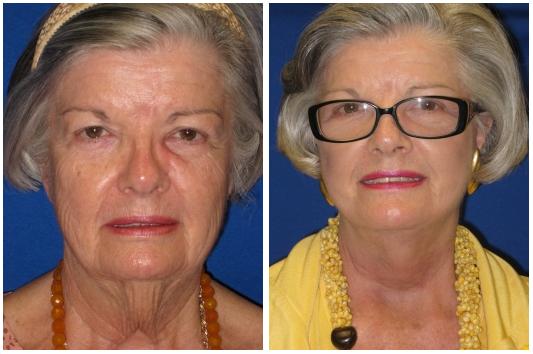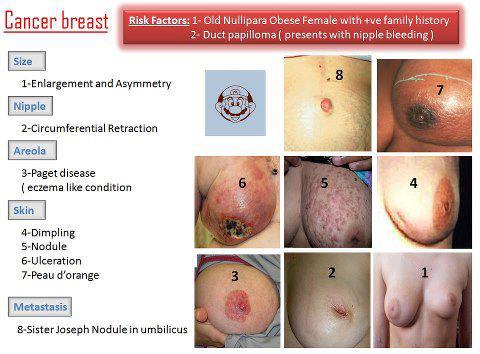Explaining Inverted Nipple Correction - Strategies, Treatment and Complications
Inverted nipple correction is a surgical procedure that corrects flat or turned in nipples. Inverted nipples may appear flat or have a depression in the form of a slit or a hole instead of a protruding nipple. They are caused by tight or short ligaments in the nipples that keep them from protruding naturally. Severely inverted nipples often cause problems with latching on during breastfeeding as well as emotional problems associated with the appearance and function of the nipples.
Inverted nipples are generally categorised into three types or grades, and the grade of inverted nipple will determine the surgical procedure required to correct the condition. The grades are:
Grade 1 - The inverted nipple will protrude with stimulation or exposure to cold and will remain so for some time. Breastfeeding is unaffected.
Grade 2 - The inverted nipple will protrude with great difficulty but never remains so. Breastfeeding may be possible, but is not always.
Grade 3 - The inverted nipple does not protrude for any reason. The milk ducts may be restricted, causing problems with breastfeeding, and the woman may suffer from rashes or infections because of the inability to exercise proper nipple hygiene.
Procedure
In general, inverted nipple correction is done as an outpatient procedure using a local anesthetic. However, the manner of the cosmetic surgery will greatly depend on the exact condition of the inverted nipple. Although unusual, the milk ducts may need to be severed in order to allow the nipple to protrude properly. Normally, small holes are made rather than one single incision. Sutures are used to hold the nipple in place while it heals. A light dressing is placed over the nipple. The surgery itself will last approximately 30 minutes.
Recovery
Shortly after surgery, patients can walk around and do light activities that don't require heavy lifting or pushing against the chest. Hard or strenuous tasks should be avoided for seven to ten days after the procedure. The majority of patients return to work three or four days after surgery. Recovery normally takes one to two weeks. Follow up appointments are necessary to ensure that the healing process is going well.
For the first few days after the surgery, the patient will likely be sore and possibly sleepy. Some swelling and bruising are normal and should not be a cause for worry or concern. The doctor will prescribe medication to help ease the pain and soreness. Medications should be taken as directed for the best results.
The dressing needs to be kept dry for two weeks, after which the nipple will be checked to ensure that everything is healing correctly. The area will also be cleansed gently before the patient is released.
Because the surgery utilises small holes rather than an incision, any scarring should be nearly invisible. The holes heal quickly and tend to fade into the nipple.
Complications
Complications with inverted nipple correction are rare. If the milk ducts must be cut, breastfeeding will likely no longer be an option.
Because it is a surgery, infection is possible but extremely rare. If an infection does occur, it must be treated immediately.
About the Author:
My name is Rod Kelly, a content writer from UK. I am into Health. You can follow me @thefreshhealth
Inverted nipples are generally categorised into three types or grades, and the grade of inverted nipple will determine the surgical procedure required to correct the condition. The grades are:
Grade 1 - The inverted nipple will protrude with stimulation or exposure to cold and will remain so for some time. Breastfeeding is unaffected.
Grade 2 - The inverted nipple will protrude with great difficulty but never remains so. Breastfeeding may be possible, but is not always.
Grade 3 - The inverted nipple does not protrude for any reason. The milk ducts may be restricted, causing problems with breastfeeding, and the woman may suffer from rashes or infections because of the inability to exercise proper nipple hygiene.
Procedure
In general, inverted nipple correction is done as an outpatient procedure using a local anesthetic. However, the manner of the cosmetic surgery will greatly depend on the exact condition of the inverted nipple. Although unusual, the milk ducts may need to be severed in order to allow the nipple to protrude properly. Normally, small holes are made rather than one single incision. Sutures are used to hold the nipple in place while it heals. A light dressing is placed over the nipple. The surgery itself will last approximately 30 minutes.
Recovery
Shortly after surgery, patients can walk around and do light activities that don't require heavy lifting or pushing against the chest. Hard or strenuous tasks should be avoided for seven to ten days after the procedure. The majority of patients return to work three or four days after surgery. Recovery normally takes one to two weeks. Follow up appointments are necessary to ensure that the healing process is going well.
For the first few days after the surgery, the patient will likely be sore and possibly sleepy. Some swelling and bruising are normal and should not be a cause for worry or concern. The doctor will prescribe medication to help ease the pain and soreness. Medications should be taken as directed for the best results.
The dressing needs to be kept dry for two weeks, after which the nipple will be checked to ensure that everything is healing correctly. The area will also be cleansed gently before the patient is released.
Because the surgery utilises small holes rather than an incision, any scarring should be nearly invisible. The holes heal quickly and tend to fade into the nipple.
Complications
Complications with inverted nipple correction are rare. If the milk ducts must be cut, breastfeeding will likely no longer be an option.
Because it is a surgery, infection is possible but extremely rare. If an infection does occur, it must be treated immediately.
About the Author:
My name is Rod Kelly, a content writer from UK. I am into Health. You can follow me @thefreshhealth




The mobdro is a cost-free motion picture streaming websites imobdroapp.com The procedure of this Installation is currently reviewed on the web page.
ReplyDelete